If you want to train with heart rate, or just keep digital tabs on what your ticker is doing, there are many good options for heart-rate monitors.
Here we'll take you through the different types of heart-rate monitors on offer from traditional chest straps to watch and arm strap alternatives, look at why you'd want to train using heart rate and share what our most highly recommended heart rate monitors are.
Choosing a heart-rate monitor
First you need to determine if you want to use a a smartwatch, cycling computer or a smartphone app to view and record your heart-rate data. From there, you can get into the specifics of each type of compatible monitors.
The vast majority of systems require an elasticated strap with sensors, either fitted to your chest, arm or wrist, using a transmitter that sends signals via either ANT (to most fitness watches and cycling computers) or Bluetooth (to newer smartphones and progressive cycling computers), or even both (AKA dual band).
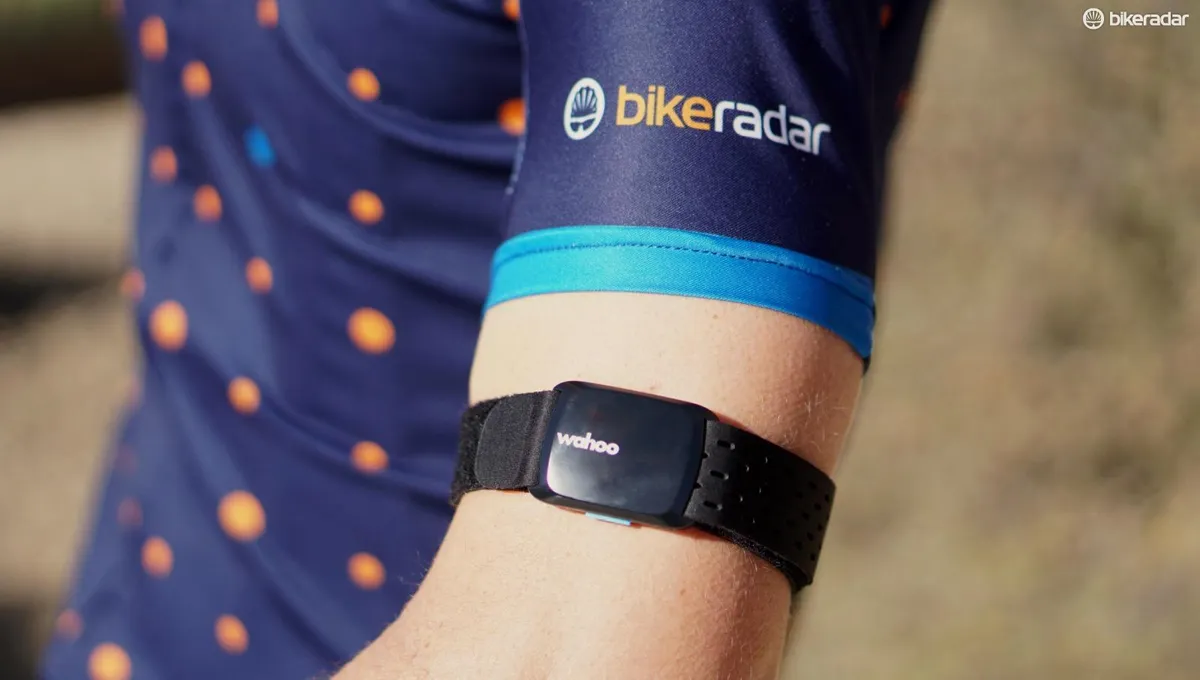
Cheaper chest straps usually have a plastic front strap that runs the width of your chest, while nicer options have a soft fabric band with a small, snap-on transmitter.
What's the difference between ECG and optical heart-rate sensors?
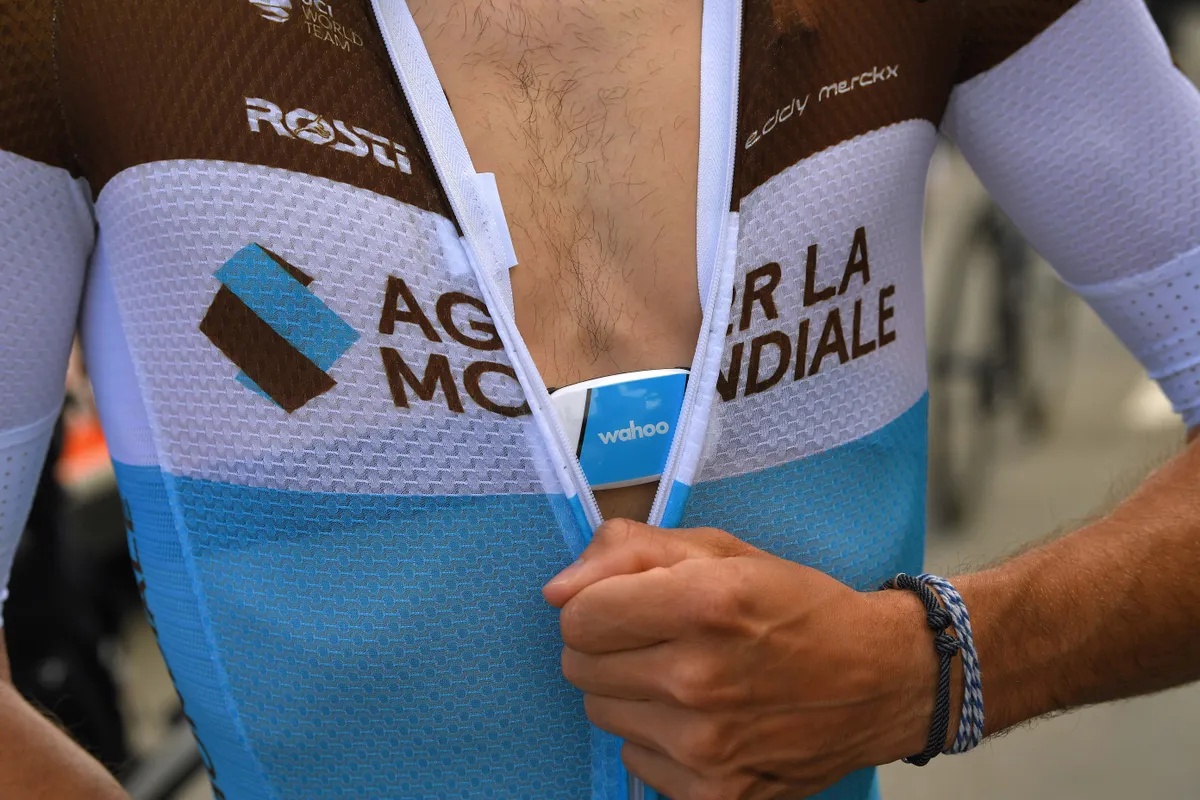
ECG heart rate sensors measure the electrical impulses that cause the contractions of the heart muscle to determine heart rate (similar to an electrocardiogram in a hospital), and you'll find these sensors in the popular chest strap options.
On the other hand, optical sensors use LED lights to shine through the skin and measure the variance in blood flow. These are found on wrist-based monitors like smartwatches and some arm straps like the Wahoo Tickr.

Even though optical sensors have come on leaps and bounds in recent years, ECG-style monitors are still widely regarded as the most reliable. Check out more about wrist-based heart rate monitors vs chest-based heart rate straps.
Data transfer: ANT , Bluetooth or dual band
Thanks to advances in heart rate monitor technology, most monitors are now dual band, meaning they can use both ANT and Bluetooth functionality to transfer data to a smartphone, cycling computer or laptop.
Typically you'll need ANT to sync with a cycling computer, and Bluetooth to sync with a mobile phone or laptop.
Both ANT and Bluetooth straps are not brand-specific, and will pair with any watch, cycling computer or smartphone that uses the same signal.
There is one notable exception here: Polar uses it own wireless protocol, so any Polar cycling computer or fitness watch can only be used with a Polar heart-rate strap.
Three types of heart-rate monitors: Watch, cycling computer and smartphone
Wrist-based heart-rate monitors: smart watches
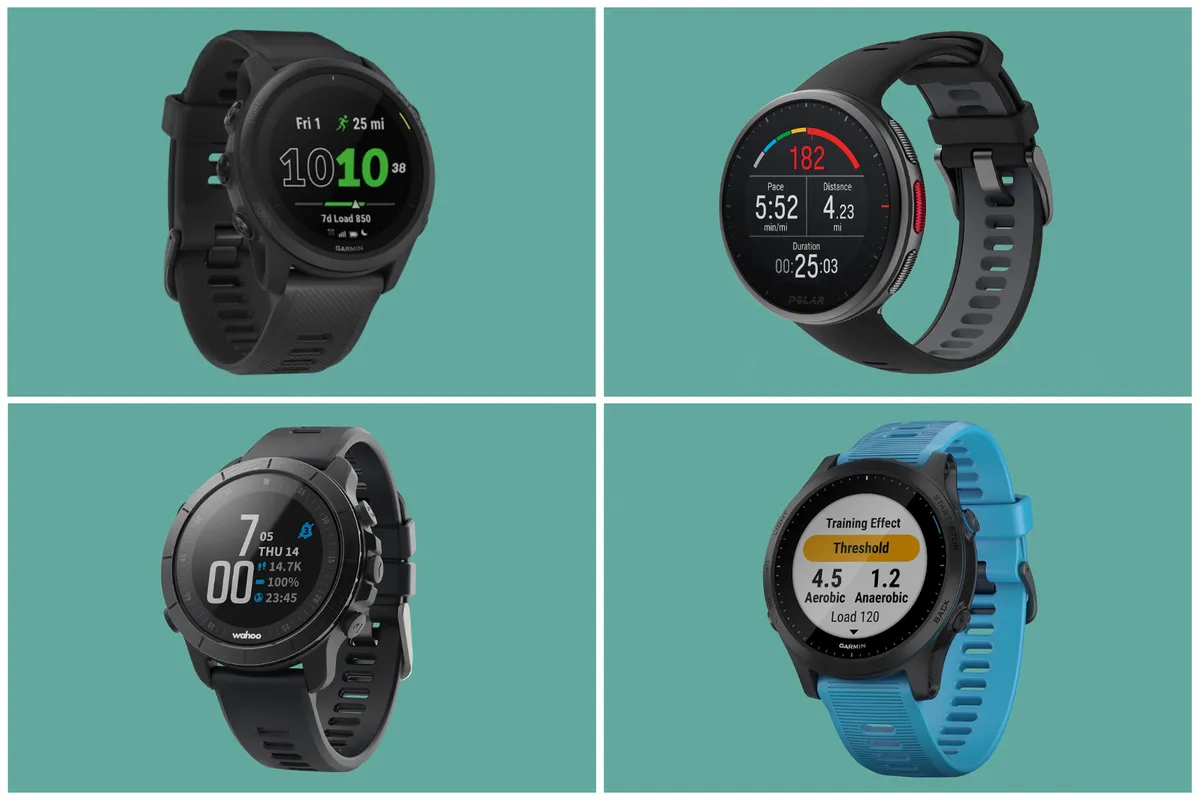
As runners were early adopters of heart-rate-based training, many fitness watches feature heart-rate monitors.
The upsides here are the convenience of a watch, plus the obvious cross-training potential should you want to run with it.
While the optical measurement of heart-rate isn't as accurate as a chest-based ECG system, wearing it around the clock means you can access interesting information such as your resting heart rate, and you can also learn about other trends such as your sleep quality with some models.
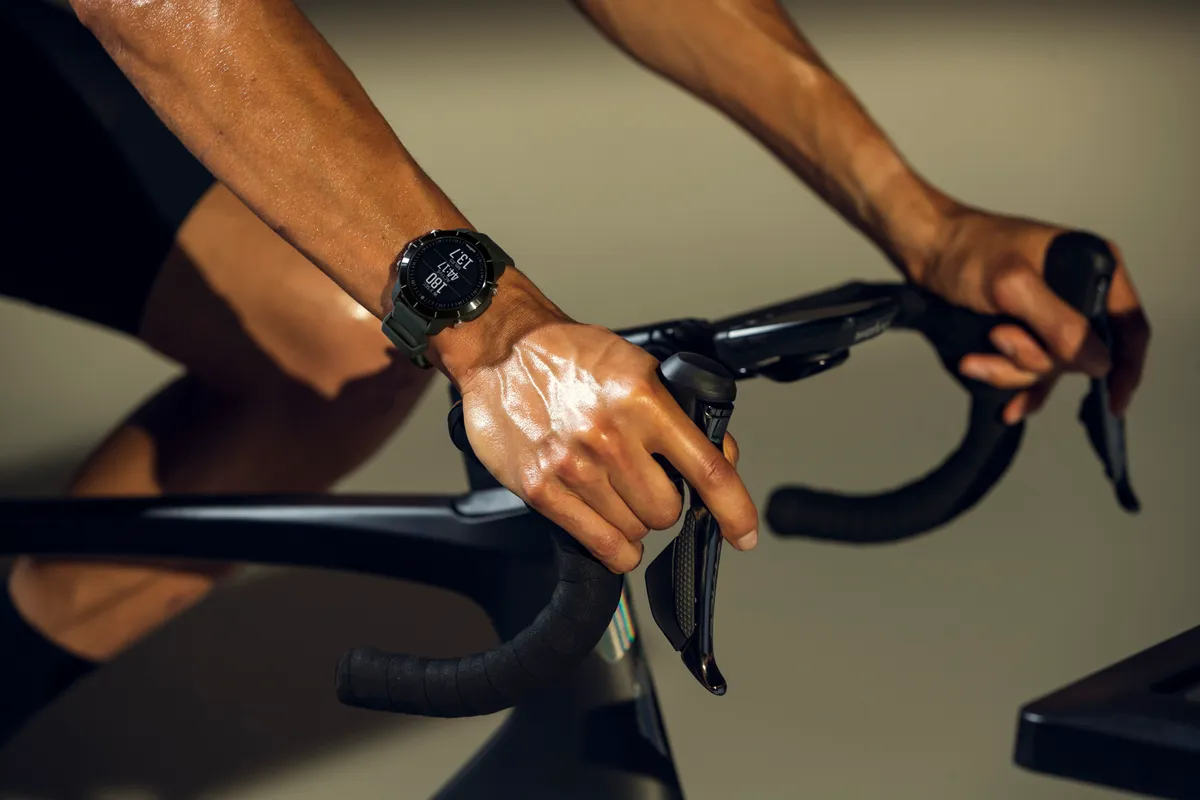
Look closely at the watch models to determine how much cycling-specific functionality they have. While some can sync with cadence sensors, powermeters and more to give you a comparable array of data recording as a cycling computer, others are more limited in their data displays and recording.
Some budget fitness watches do not feature downloadable data, so you won't be able to sync with apps like Strava and your ride analysis will be quite limited.
The latest crop of smart fitness watches like the Garmin Forerunner 945 and Polar Vantage V2 boast plentiful cycling-specific features to help you on the ride, as well as handy multi-sports options.
Cycling computers

Cycling computers that come with heart-rate straps start at about US$100 / £60. With these, you can have a dedicated device on your handlebars that also gives you a good range of bike-specific data like distance, speed, time and more. As with the watches, the cheaper options aren't downloadable, but most of the mid-range and up models are.
Cycling computers that come with heart-rate straps usually have a range of heart-rate features, such as adjustable heart-rate zones, LED zone indicators, alarms for going out of target zone, a cumulative tracker for time in various zones and more.
Some of the more advanced units will allow you to program or download heart-rate-based workouts into the computer, making it easier than ever for you to follow during the ride.
Smartphones
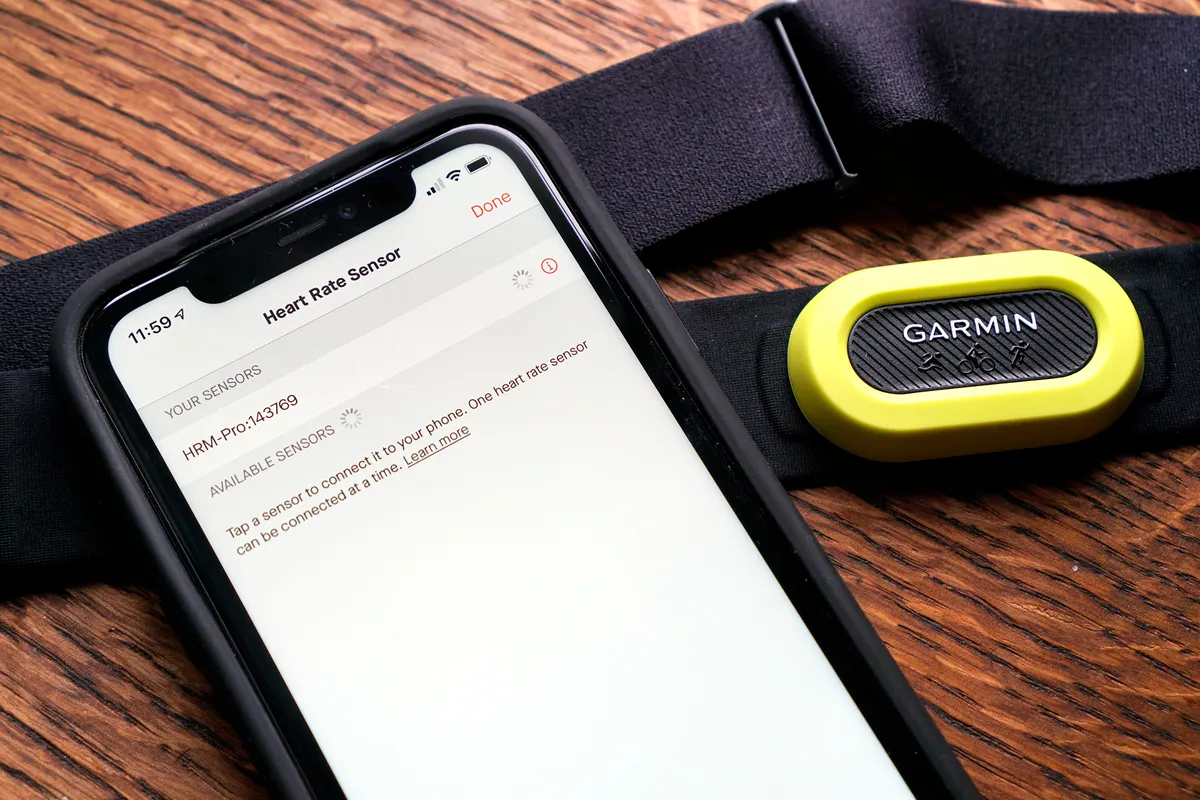
Finally, there is your smartphone. Besides the Bluetooth strap, you will also need an app to record your ride and corresponding heart-rate data.
Check out our pick of the Best iPhone and Android Apps for Cycling. Strava, Wahoo Fitness and Cyclemeter are a few good options.
Best heart-rate monitors in 2021
Best heart-rate monitors in 2021
- Garmin Forerunner 945: £500 / €649.99 / $599.99 / AU$999.99
- Wahoo Tickr Fit: £64.99 / €79.99 / $79.99 / AU$129.95
- Polar Vantage V2: £449 / €499 / $499.95 / AU$699
- Coros Pace 2: £180 / €199.99 / $249
Garmin Forerunner 945
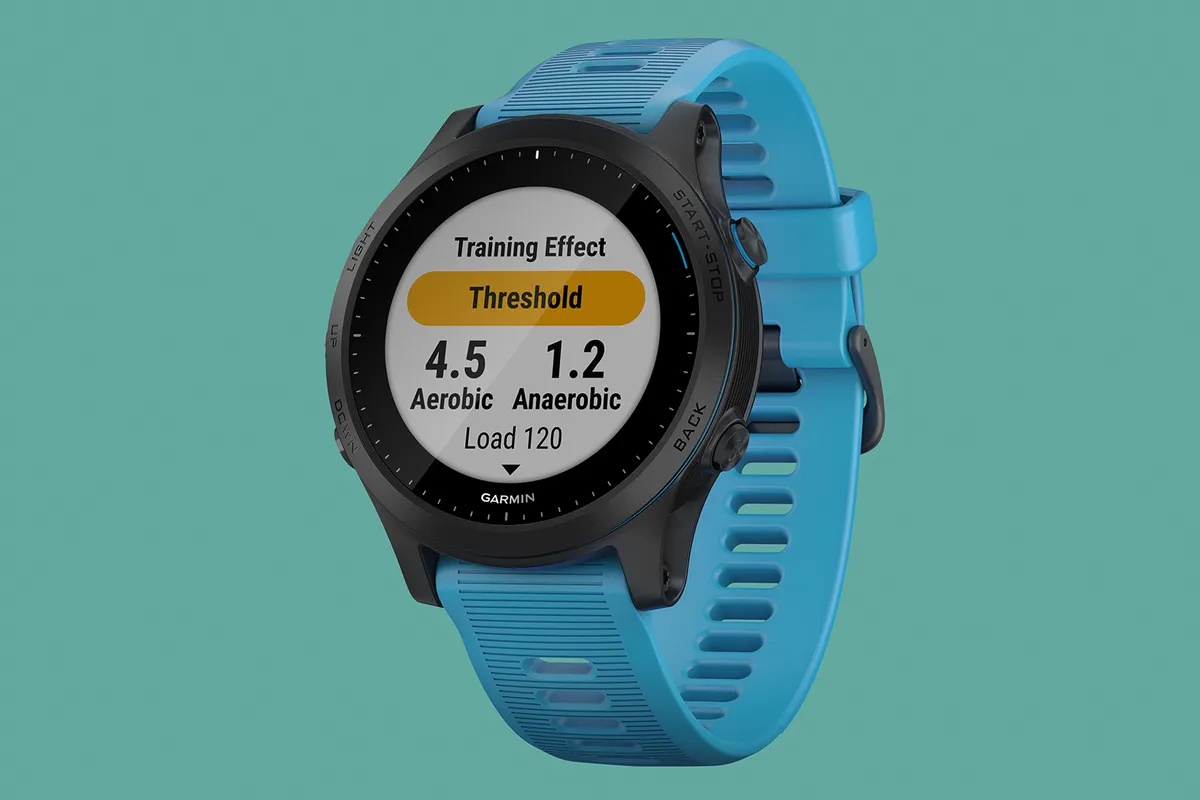
- Many, many features
- Excecllent battery life
- £500 / €649.99 / $599.99 / AU$999.99 as tested
Boasting the same features as the top-end Garmin Fenix 6, the Forerunner 945 retains its easy to use interface, despite the impressive raft of metrics on offer.
The Forerunner 945 plays nicely with other devices and apps, syncing automatically and wirelessly at the end of each session so you can prioritise your recovery.
Crucially, the raft of cutting-edge features is backed up with a generous 36 hour battery life on GPS mode, and good GPS signal too.
Wahoo Tickr Fit
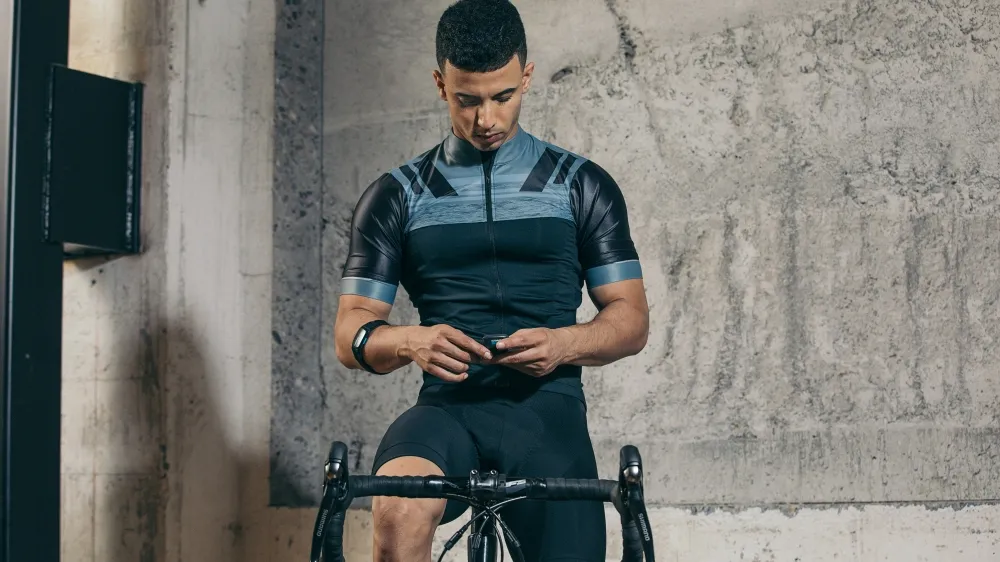
- Good alternative to chest straps
- Handy for indoor training, but can look odd or become incompatible with layering for riding outdoors
- £64.99 / €79.99 / $79.99 / AU$129.95 as tested
Hate the feeling of wearing a chest strap or find it doesn't mix well with a sports bra? Wahoo's Tickr Fit offers an alternative band placement for the arm, this time using optic measurement rather than ECG.
We have to admit that it's a look, but that's not such a problem for indoor riding and virtual training. Perhaps a less sweaty area means you'll need to wash the strap less often, causing less wear.
Using both ANT and Bluetooth, you can sync the strap easily with a phone, cycling computer or laptop.
Polar Vantage V2
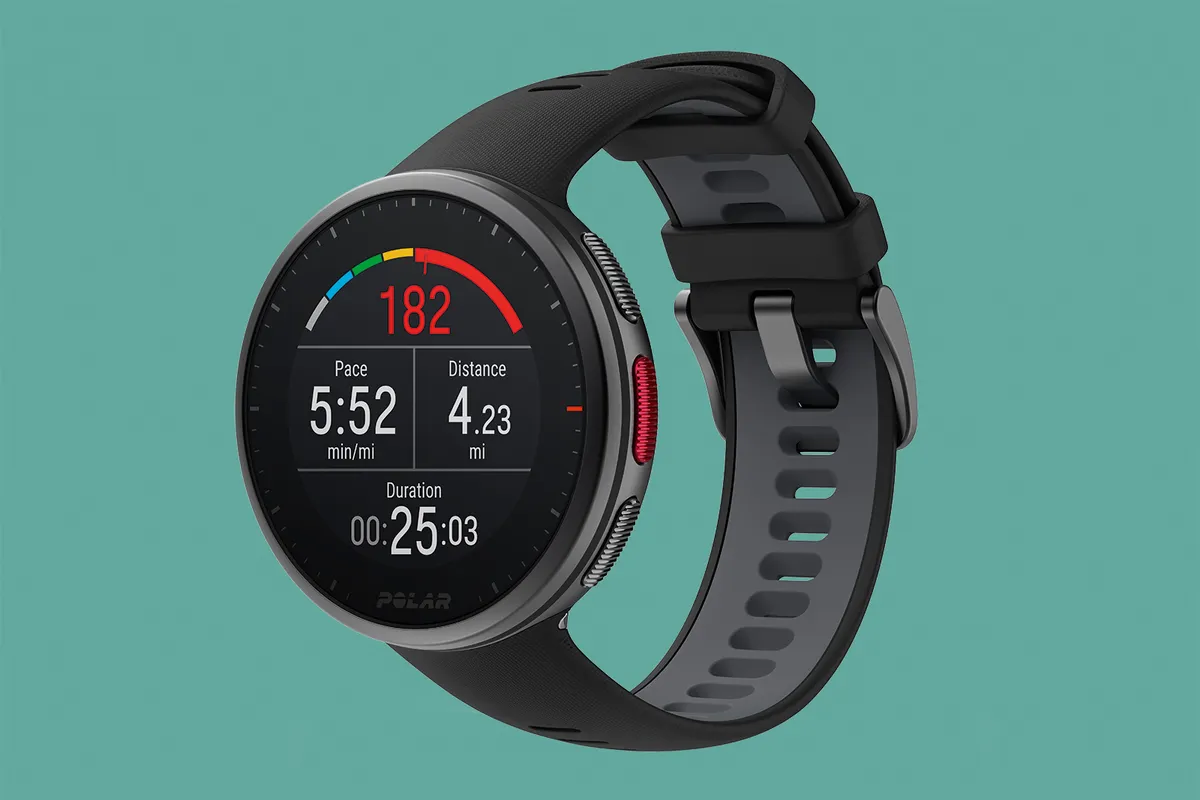
- Great array of cycling tests
- Regular fuelling reminders
- £449 / €499 / $499.95 / AU$699 as tested
As a multi-sport watch, there are a few features on the Polar Vantage V2 that'll be unnecessary for any die-hard roadies, but the level of data analysis and fitness tests available can't fail to impress.
You can use this data to set your heart rate zones, and use the fuelling reminders to help you consume the right level of carbs for your ride duration and intensity.
The watch is compatible with Komoot navigation, although visually this isn't the easiest to follow on the small screen, and with Strava for Live Segments.
Coros Pace 2
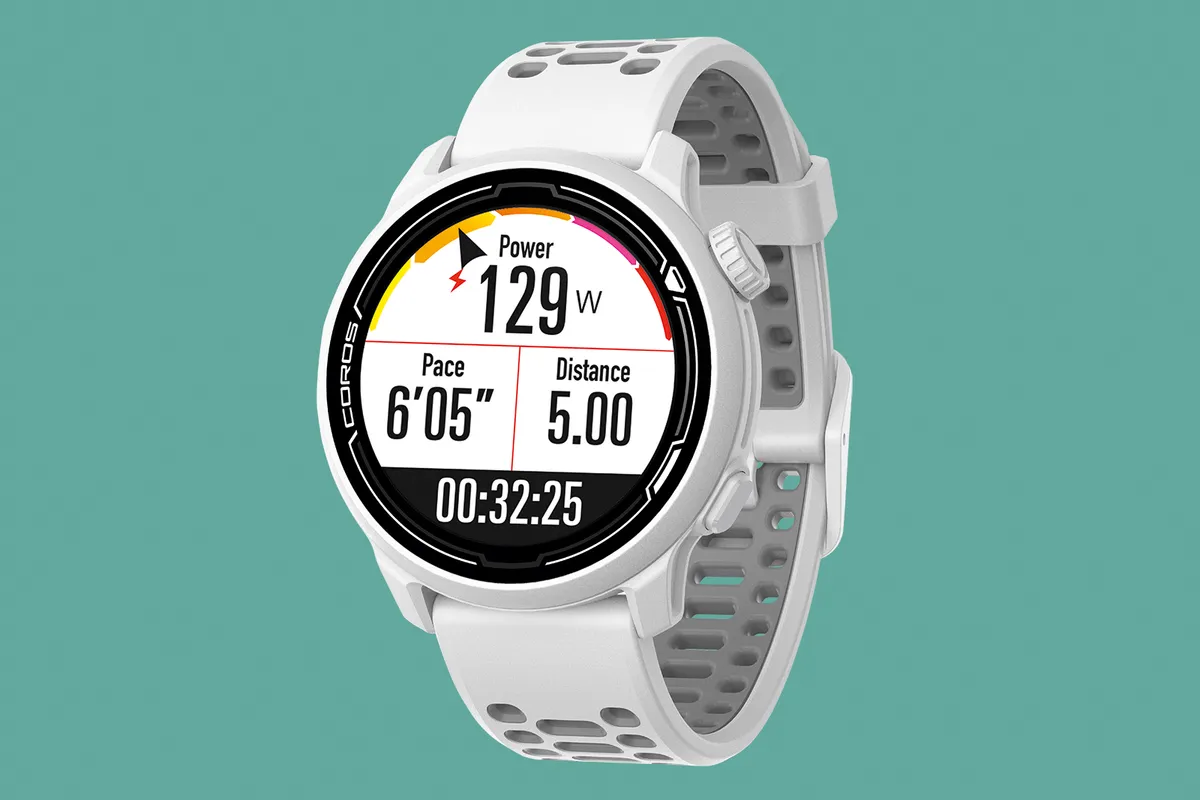
- Incredibly lightweight
- Fantastic battery life
- £180 / €199.99 / $249 as tested
The lightest smartwatch around at launch, the slight 36g Coros Pace 2 proves that smartwatches needn't be heavy or bulky.
Featuring both ANT and Bluetooth connectivity, you'll be able to sync up easily to whatever computer, powermeter, cadence sensor, smartphone or laptop you're using.
With many training features, you get a lot of bang for your buck, but unfortunately this doesn't extend to mapping and navigation.
At the price, it's a hard smartwatch to beat if you don't need navigation, and doubles up well for other sports too.
Why should I train with a heart-rate monitor?
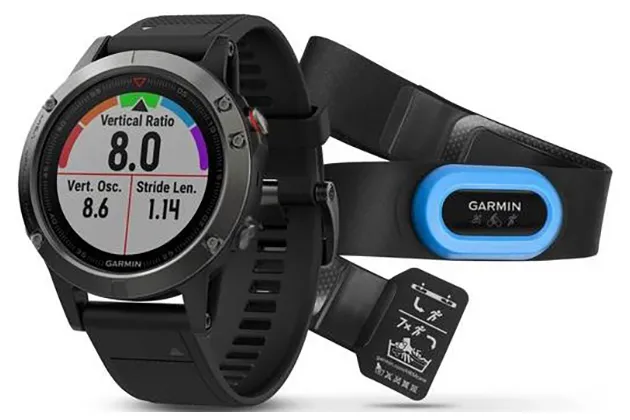
Using a heart-rate monitor will not only allow you to find your resting and maximum heart rate, but more crucially set your heart-rate zones to allow you to train with them.
Just like training with different power zones, riding within these different ranges of intensity allows you to build different areas of fitness, whether that's aerobic endurance or upping your sprint's maximum power.
With a comprehensive training plan, you can use these training zones (measured using heart-rate, power or even feel, known as 'perceived exertion') to set targets for your rides, intervals or workouts, depending on what you want to achieve.
Learning to ride within these zones as part of an effective plan will not only help you to pace your efforts well, but also reduce the likelihood of you overtraining or riding too hard on your recovery rides. You might think this sounds a little counterintuitive, but it's a more common problem than you might think.
Unlike setting a plan based on average speed or duration, the numbers behind your training zones are specific to you, based on your physiology and level of fitness. Read up on how you can use training zones to fast track your fitness gains with our comprehensive guide.
Heart rate vs power - which is best for training?
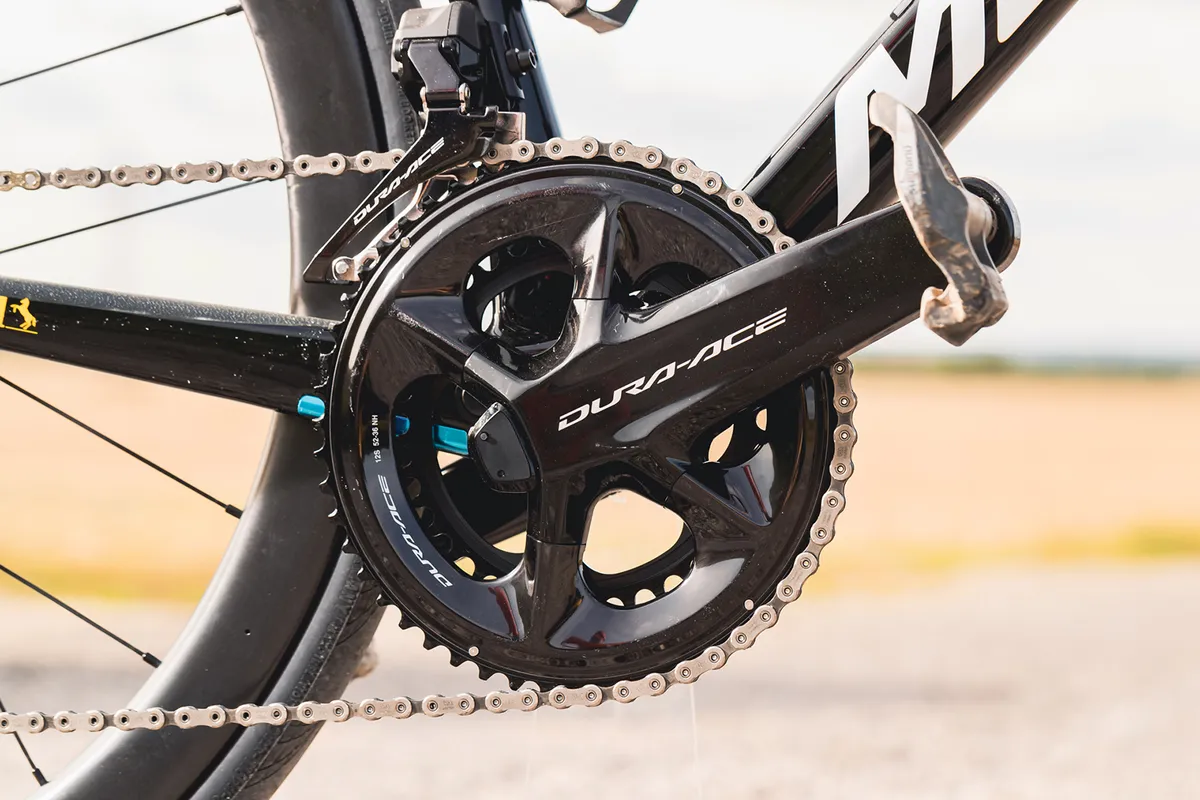
While heart rate monitors tend to be much more affordable than power meters, there are some drawbacks. Your heart rate is also influenced by factors such as sleep, altitude, level of fatigue and caffeine intake, and there is a short lag between you increasing or decreasing your level of effort and your heart rate responding and changing accordingly.
On the other hand, power data is much more accurate and specific to your effort, responding simultaneously with any change in intensity. Learning how to train with power can be a little more daunting: there are certainly more data to get your head around. Analysis software such as Training Peaks can help you make sense of the numbers.
Unlike using a power meter, you can use your heart-rate monitor on different bikes easily without having to change out any equipment or go to any eye-watering expense, and similarly you can track your progress across different sport types too.
For example, with a modern digital sports watch, you can track your heart-rate for cycling, running, swimming and in the gym, plus even monitor your sleep quality. This helps you gain a much fuller insight to your training and recovery potential.
For the full low-down, check out our guide to training with heart rate vs training with power.
How should I care for my heart-rate monitor?

You should clean your heart-rate monitor regularly in line with the manufacturers instructions.
Chest straps with detachable sensors are the easiest to clean, while cheaper chest straps with integrated sensors may require more careful cleaning. Some are even machine-washable.
If you train using a heart-rate strap very regularly, you might want to consider using a couple of different straps with the same sensor, so you can always have one ready to use even if the other is being cleaned.
Failure to clean your heart-rate chest strap regularly enough can cause skin irritation, not to mention the smell.
Smartwatches require careful and regular cleaning. Again, consult the manufacturer's guidance for the safest way to clean your device.
